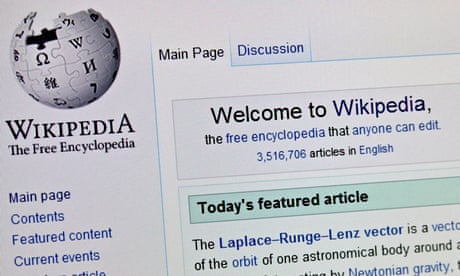Faced with a paucity of female editors on Wikipedia, one of Britain's oldest institutions is stepping in to help fill the gap.
The Royal Society, founded in 1660 to promote excellence in science, hosted a Wikipedia "edit-a-thon" on Tuesday in conjunction with the Royal Society of Engineers in an attempt to right the imbalance. The online encyclopedia has a readership with a largely even gender balance, but it is thought that only around one in 10 of its editors are female.
It is the third such event held at the prestigious institution, following similar events in 2012 and 2013 on Ada Lovelace day, which celebrates the Victorian scientist known regarded by many as the godmother of computer programming, and the group are already seeing dividends.
"We've actually run out of female fellows of the Royal Society that don't have articles," says John Byrne, the Society's "Wikimedian in Residence". Byrne was seconded to the society from Wikimedia, the US charity behind Wikipedia, with the express intention of improving access to information about scientists from underrepresented groups. "So we're widening what we're looking at this time."
The number of editors on the English-language version of Wikipedia peaked in summer 2007 at 51,000, and has been in steady decline ever since. What's more, there have only ever been a small fraction of those editors who are female; estimates range between 8 and 13%.
"We are short of editors, we're declining slowly," Byrne said.
"And particularly editors with expertise, and also female editors. The idea is to get new editors, and to expose people to editing even if they're not going to continue, which some of them – most of them – won't."
Throughout the day, around 40 volunteers used the society's resources to expand and create articles about women in science and engineering. To do so involved battling a second bias: that of the society itself, which only admitted women as fellows in 1945.
What you see as you walk through the society "are a lot of portraits of bewigged gentlemen, often 200 years old," said Athene Donald, a fellow of the society and the chair of their education committee.
"It is trying to do a complete rethink about its imagery across the board … but it's unfortunate that the few women we have aren't more prominently displayed."
With the success of the earlier edit-a-thons, attention in the third iteration focused on earlier women, who frequently laboured behind the scenes while men took the credit.
Keith Moore, the society's librarian, points to examples like Sarah Stone and Maria Sibylla Meriam, two 18th century illustrators whose work adorned the pages of biology books even as the artists behind it remained anonymous.

Comments (…)
Sign in or create your Guardian account to join the discussion